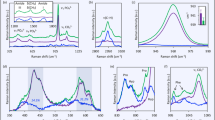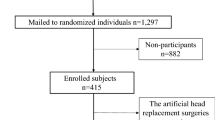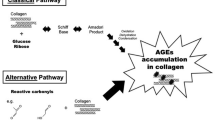Abstract
THE development of improved methods for the isolation and determination of hydroxyproline from bone1 has made it possible to study collagen turnover in vivo in calcified tissues with a higher degree of accuracy than was previously attainable. This is accomplished by the administration of carbon-14-proline, followed by the isolation of hydroxyproline. The conversion of proline to hydroxyproline is a measure of collagen formation2.
This is a preview of subscription content, access via your institution
Access options
Subscribe to this journal
Receive 51 print issues and online access
$199.00 per year
only $3.90 per issue
Buy this article
- Purchase on Springer Link
- Instant access to full article PDF
Prices may be subject to local taxes which are calculated during checkout
Similar content being viewed by others
References
Firschein, H. E., and Shill, J. P., Anal. Biochem., 14, 296 (1966).
Juva, K., Prockop, D. J., Cooper, G. W., and Lash, J. W., Science, 152, 92 (1966).
McPherson, G. D., Acta Orthopaed. Scand. Suppl., 78 (1965).
Smith, Q. T., Armstrong, W. D., and Singer, L., Anal. Biochem., 2, 23 (1961).
Bauer, G. C. H., Acta Orthopaed. Scand., 23, 169 (1954).
Author information
Authors and Affiliations
Rights and permissions
About this article
Cite this article
FIRSCHEIN, H., MILLER, O. Comparison of Calcium-48 and Carbon-14-proline as Indicators of Bone Metabolism. Nature 212, 1252–1253 (1966). https://doi.org/10.1038/2121252b0
Published:
Issue Date:
DOI: https://doi.org/10.1038/2121252b0
This article is cited by
-
Determination of45Calcium and14Carbon ascorbic acid in bone using a liquid scintillation system
Calcified Tissue Research (1969)
Comments
By submitting a comment you agree to abide by our Terms and Community Guidelines. If you find something abusive or that does not comply with our terms or guidelines please flag it as inappropriate.



